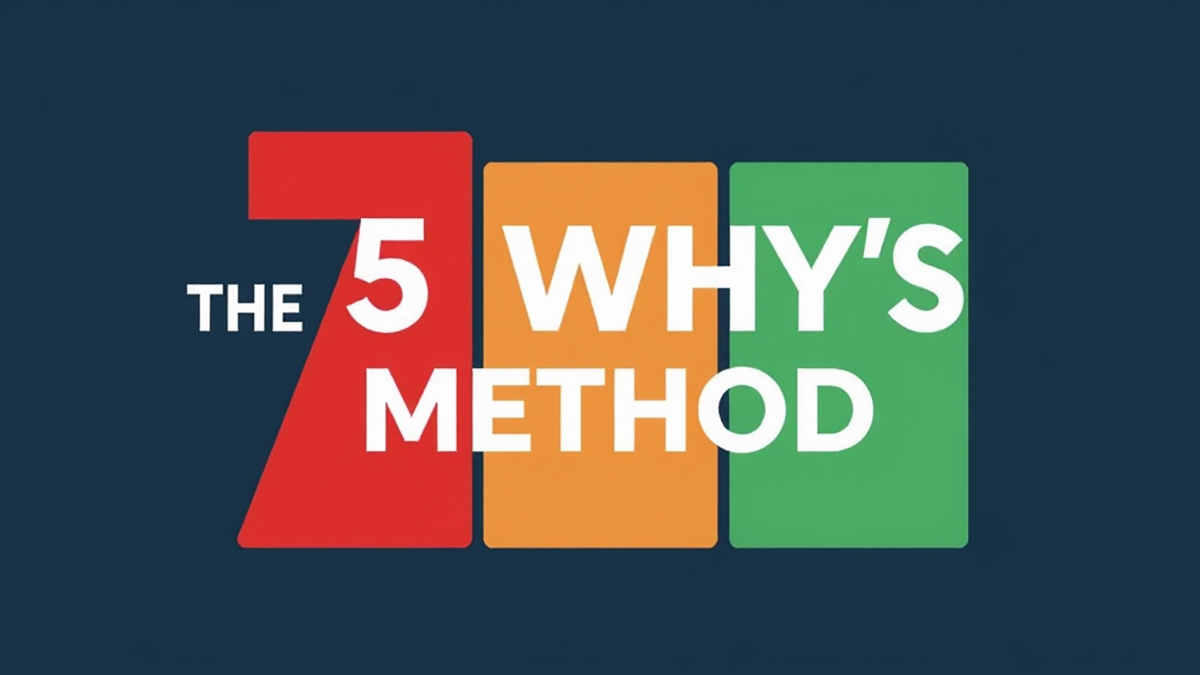The 5 Whys method is a simple but powerful technique for uncovering the root cause of a problem by asking the question “Why?” five times in succession. It’s a foundational tool in problem-solving, especially within Lean and Six Sigma methodologies, where it helps identify the underlying causes of issues rather than just treating the symptoms.
The Core Idea
Imagine you’re fixing a leaky faucet in your kitchen. You might patch the leak and think the problem is solved. But if you don’t dig deeper, you might find that the leak returns because you didn’t address the underlying cause. The 5 Whys method is like peeling an onion—each layer you remove brings you closer to the core issue.
Let’s walk through a simple example: Your car won’t start.
- Why won’t the car start? The battery is dead.
- Why is the battery dead? The alternator isn’t functioning.
- Why isn’t the alternator functioning? The alternator belt is broken.
- Why is the alternator belt broken? The belt was well beyond its useful life and wasn’t replaced.
- Why wasn’t the belt replaced? The car wasn’t maintained according to the recommended schedule.
By the fifth “Why,” you’ve uncovered that poor maintenance is the root cause of your car not starting. If you only replaced the battery, you would treat the symptom, not the actual problem. You can prevent the issue from recurring by addressing the root cause—improving the car’s maintenance.
Key Principles of the 5 Whys Method
- Focus on Processes, Not People: The goal is to discover what failed in the process, not who to blame. For example, instead of blaming someone for not maintaining the car, you focus on why the maintenance process failed.
- Base Each Why on Facts: Every answer must be grounded in evidence. The answer to each “Why” should be something you can observe or verify, not just speculation.
- Iterate and Adapt: While it’s called the 5 Whys, you may find the root cause in fewer or more than five questions. The idea is to keep asking “Why” until you reach the core issue.
Analogy: Fixing a Garden
Think of the 5 Whys like tending to a garden. If you see a plant wilting, you could water it (treating the symptom). But what if the soil is poor? Or pests are eating the roots? By asking “Why” repeatedly, you dig deeper—quite literally—to understand if it’s a lack of nutrients, pests, or something else entirely. Once you know the real cause, you can adequately ensure the whole garden thrives.
Practical Tips for Using the 5 Whys Method
- Stay focused: Stick to one problem at a time. Trying to address multiple issues simultaneously can confuse the analysis.
- Avoid Assumptions: Ensure that each “Why” is based on actual observations, not what you think might be the problem.
- Use a team approach: Involving people with different perspectives can help you identify the root cause more accurately.
Potential Pitfalls
- Stopping too early: Sometimes, people stop asking “Why” too soon, resulting in a superficial analysis.
- Not asking enough Whys: Conversely, it’s easy to go off on tangents, asking too many irrelevant questions.
The 5 Whys method is straightforward and effective for addressing the root cause of a problem. It’s like being a detective, peeling layers away until you uncover what’s happening. This method helps ensure that you’re not just fixing problems on the surface but addressing the deeper issues that cause them.











